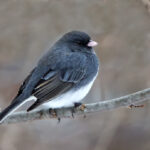A well-manicured lawn adds undeniable curb appeal to a property. Homeowners who take pride in their lawns should know that they can take that pride all the way to the bank, as investing in a pristine lawn can provide a significant return at resale.
A 2019 report from the real estate experts at HomeLight found that a $268 investment in lawn care service can add $1,211 at resale. That’s a 352 percent return on investment.
Homeowners can capitalize on a pristine lawn even further by tending to their own lawns. Crabgrass is one lawn problem that can compromise the look of an otherwise lush lawn. Thankfully, crabgrass can be controlled without much effort.
Identifying crabgrass
Crabgrass is a weed that grows in areas of a lawn that are bare or where the grass is thin. Crabgrass gets its name from its appearance, as it grows from the center outward and mimics the look of crab legs emerging from the center shell.
The growth of crabgrass
The University of Minnesota Extension notes that crabgrass is an annual plant. That means a crabgrass infestation that’s problematic once the mercury rises in the summer will die out in late fall or early winter. But crabgrass germinates in the spring, so homeowners will want to take steps to prevent it long before it becomes an eyesore in summer.
How to corral crabgrass
The UME notes that application of a pre-emergent herbicide before crabgrass seeds can germinate is an effective way to eliminate it. The timing of that application can be tricky, as jumping the gun and applying the herbicide too early can prove fruitless. The same goes for applying herbicides too late. Crabgrass will likely still grow if the herbicide is applied too early or too late. UME recommends applying a pre-emergent herbicide when soil temperatures approach 55 F.
A chemical treatment may be applied after crabgrass has already grown in, but this option requires careful application to avoid killing surrounding healthy grass.
Crabgrass can be pulled out by hand, but such an approach can be physically daunting. That’s especially so because crabgrass thrives when the weather is hot and dry. So, homeowners who intend to pull crabgrass by hand can decrease their risk of dehydration or heat-related illness by drinking plenty of water and pulling the grass during early morning or evening hours when the sun is lower and temperatures are more mild.
Crabgrass can compromise the look of an otherwise healthy lawn. But various strategies can eliminate crabgrass and restore a lawn without much effort on the part of homeowners.







